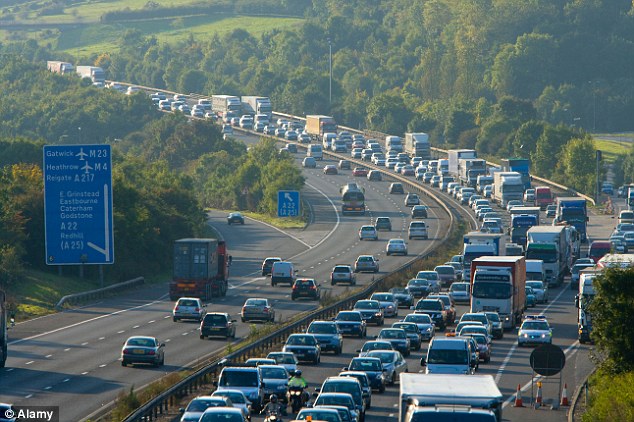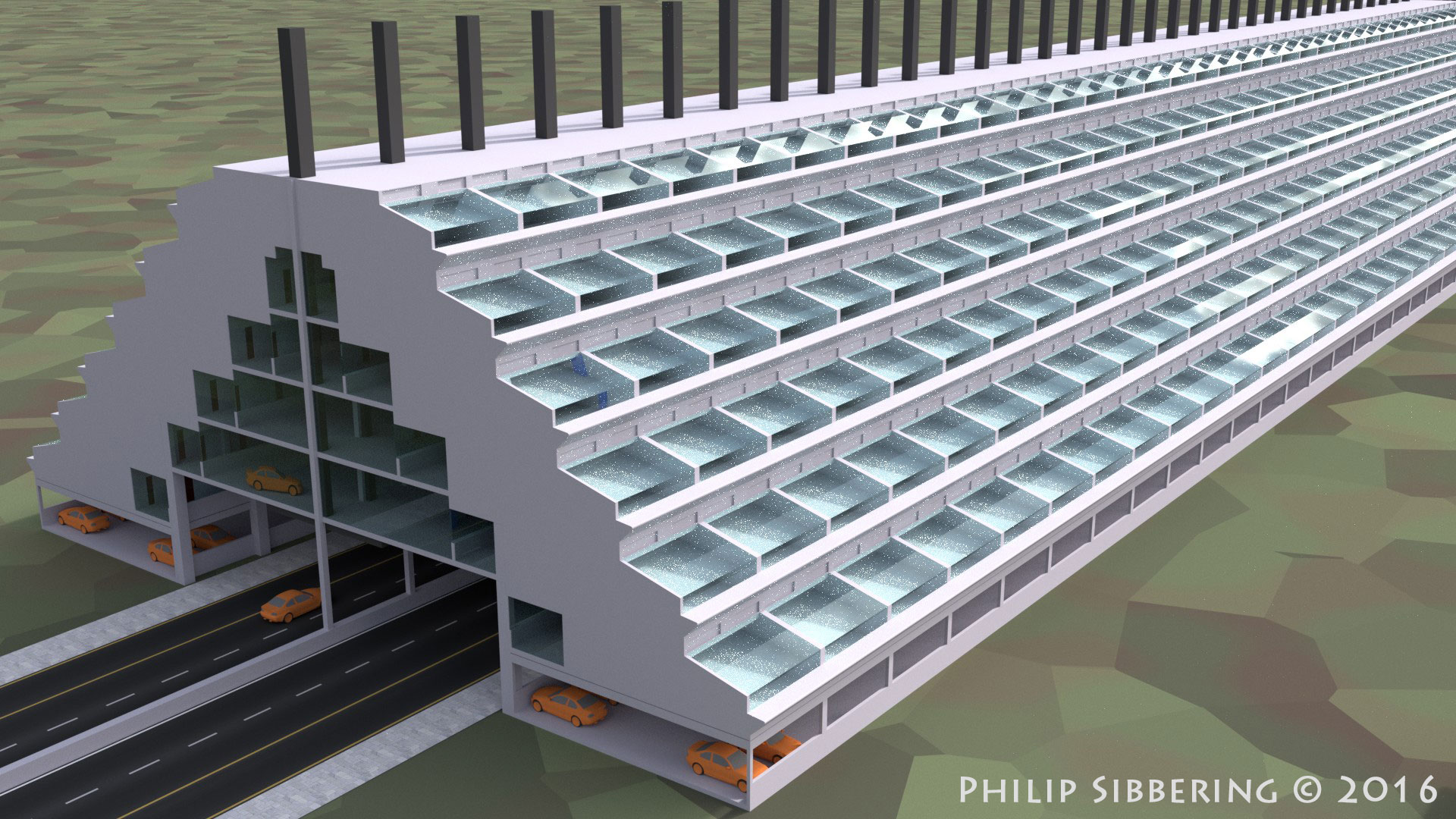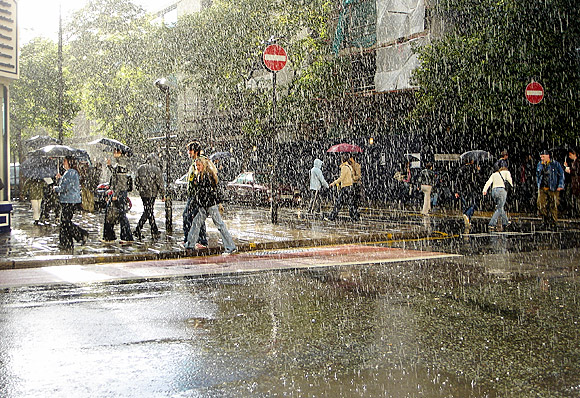COR housing
Following on from my earlier post 'Future Perfect', I want to start to layout the argument for my vision. Construction Over Road/ Rail Housing make use of the wasted space above roads and rail systems. The idea is to better manage space in countries will high population densities, with an aim to maximize 'nature space'.

Nature space is any outside space that has direct access to the sun. This is perfect for plants, and studies show that humans enjoy nature far more than concrete jungles. Modern city design eats into this nature space and removes nature space from people's lives. If you take a satellite image of central London all you'll see is roads, pavements, and barren roof tops. We need roads but they're hardly human friendly once you step out of a car. Most roofs a not used by humans at all, and devoid of life. Pavements are also needed but not much of a joy more utility. But if you do not have a car: it seems most would prefer to walk/ cycle through a park (away from the fumes, noise, and traffic chaos).
The problems with modern city design are endless. As London develops the limitations of traditional architecture start to show. The more skyscrapers you put in: the more you'll overload the road system. Even cities like New York, with very wide roads, have ground to a virtual halt. This is due to the amount of traffic needed to get people and goods to all those skyscrapers on a daily basis!
There has to be a new way to look at city planning, or more specifically housing. In the ye old days it made sense to build a house by the side of muddy track. There was plenty of nature, transport was by foot, horseback or carriage (pulled by horses), and humans had plenty of fresh air. Even in the early city: the industrialists built terraced houses beside narrow roads that saw little traffic. Children could play outside and were rarely interrupted by horse or cart. All that is gone.
Today it make far less sense to build by the side of a modern road. As they are rock hard, and filled with fast moving cars. These are a real hazard to humans (in 2014 1,775 people were killed, and 22,807 seriously injured). Roads are hardly a nice thing to cross, or stand next to. It seems that the bigger the road, the more people dislike living next to them. This dislike means that as roads get bigger the city planners have to allocate more space to the sides of roads to act as a buffer. There are limits as no one wants to live right next to a motorway;

This is the M25. It cuts through vast swathes of prime countryside yet no-one would want to live next to it. COR housing turns this accepted wisdom on its head. As it allows decent homes to be built over roads, (including motorways), and railways. To make use of the space above the road/ railway. It's like building a continuously wide bridge and sticking houses on top. This creates a 'tunnel' over the road.

This turns are eyesore into prime real estate with fantastic views of the English countryside! In the process humanity gains a number of benefits aside from nice housing.
Starting from the ground up: the road/ railway is protected from the sun and weather so snow will not block it. Rain cannot reach the road to cause adverse driving conditions, and rails will not buckle in the hot sun, or leaves delay trains. Roads and rail are noisy, but the COR housing 'tunnel' is designed to absorb noise. Not only are the inhabitants above protected from high-speed traffic noise, but also everyone in the area will no longer hear the motorway. You could live in a regular house right next to the motorway and not hear it.
Ground level of the COR build, that runs along the side of the road, is all car park. Plenty of parking for everyone, with 1 parking space per flat. Car parking space can also be extended if needed. If built on a floodplain these parking spaces are raised of the ground so they cannot be flooded.
The first floor and above are all flats, with a living space of 8m x 6m (48 sq/m) for a single bedroom flat. Designs are modular so a two bedroom flat is basically two one bedroom flats joined together. Each 1 bedroom flat has a walled garden around 6m x 4m (24 sq/m) with a two bedroom flat double this.
On the top-level, the roofs of the upper most flats, is a continuous roof garden where wild meadow flowers grow. This will attract birds, bees, and small insects. It's the COR version of the (now disappearing) field hedgerows.

Inside the COR build, where there is no natural light, are commercial spaces for shops, rack farms, and data-centres. It also has space for a 'electric vehicle roadway' that allows you to get around the entire COR build without having to go outside. It's a bit like a very long American style shopping mall. This is a very good idea as Britain has a lot of rain. But not only a lot of rain, but our rain seems to be unpredictable. In summer blazing hot sunshine followed by downpours, followed by sun and it's not even launch yet 🙁 Britain is known for its rain, and everyone things you should put a f**king roof on the streets. Especially in the centre of London, but pretty much anywhere it rains a roof would be good!
And on the rare days when it's actually sunny during the summer, all those who live in the COR-Habs can take a quick walk outside and frolic in pristine country side. Without hearing the roads behind them. Bliss...
Moving away from motorways: in the city, like London, is allows you to build over roads in cramped spaces, and may give you enough housing in such a dense space that you have more park areas where we would traditionally build houses. These parks would be a nice place to walk in the summer, or jog, or cycle.
If COR housing was implemented, then a future satellite photo of a city will be nothing but parks, walled gardens, and grassy roof tops. A better place to live. All the roads would have disappeared.
Subscribe | Patronise | Contact
2 Responses
Hearing feedback is very important to me in developing my ideas. Much of my designs are inspired, and crafted, by chatting to fans on forums before snowballing into a full concept you'll find here. I would like to thank all those who have contributed critiques and participated in discussions over the years, and I would especially like to thank all those who commented on this specific topic. If you would like join in, you are most welcome!
To support my work: Connect

Interesting idea, just some observations:
A tunnel requires, if i'm not mistaken, an extensive fire controle system and air controle system.
One step to a solution could be "breathing holes" on the side, fenced and planted, to ease the noise and the optics and serve as simple escape points, even entry and exit points for an automated transportation system.
Have a decreasing speed limit radiating from the center of the tunnel right down to incredible boring american suburbia hell pleasantry ^^ infront of your doorstep.
Fire control is via a misting/ sprinkler system. The sprinkler system can also be used to clean the roads during testing. It's a little tricky because some chemicals transported by road react violently with water. I'm also considering a foaming system but they are incredibly expensive expensive; https://youtu.be/-G5yWF_SWSw (I don't think it damages cars).
The other big issue is explosion suppression and that is tough to do effectively, however the road section has a lot of headroom, it's a very large space, and if contained in a flexible space-frame and concrete block system (decoupaged from the super structure) may work - but also drives up costs.
The airflow intake through the parking space at the bottom, moves into the road section and exits out through the ceramic lined chimney stacks at the top. This isolates the commercial and living space from the road space.
In front of your door step would be public space, then commercial space or a very low speed electric vehicle lanes. For most it would be like living right inside a shopping mall, or office space, with cycle lanes.